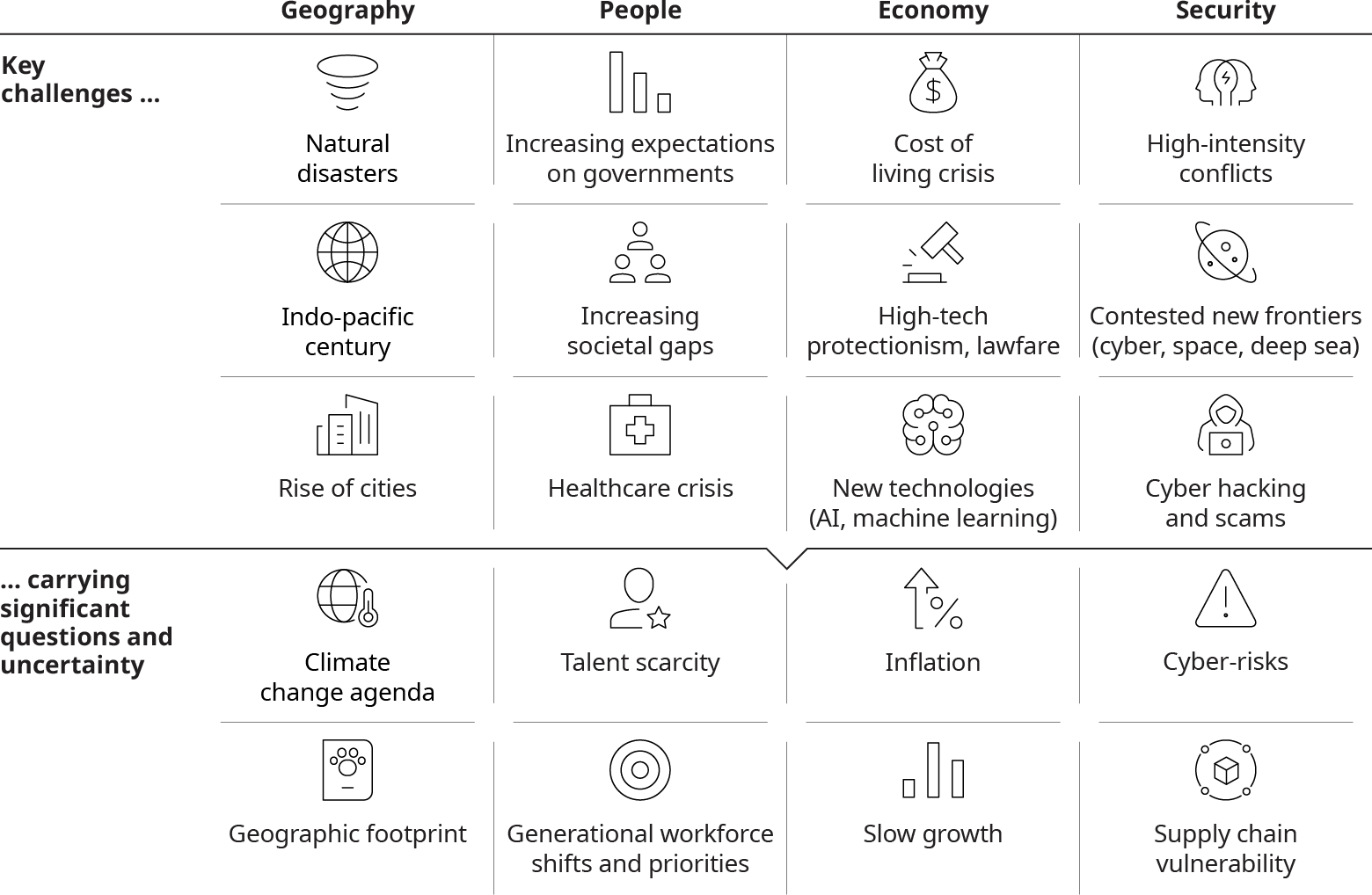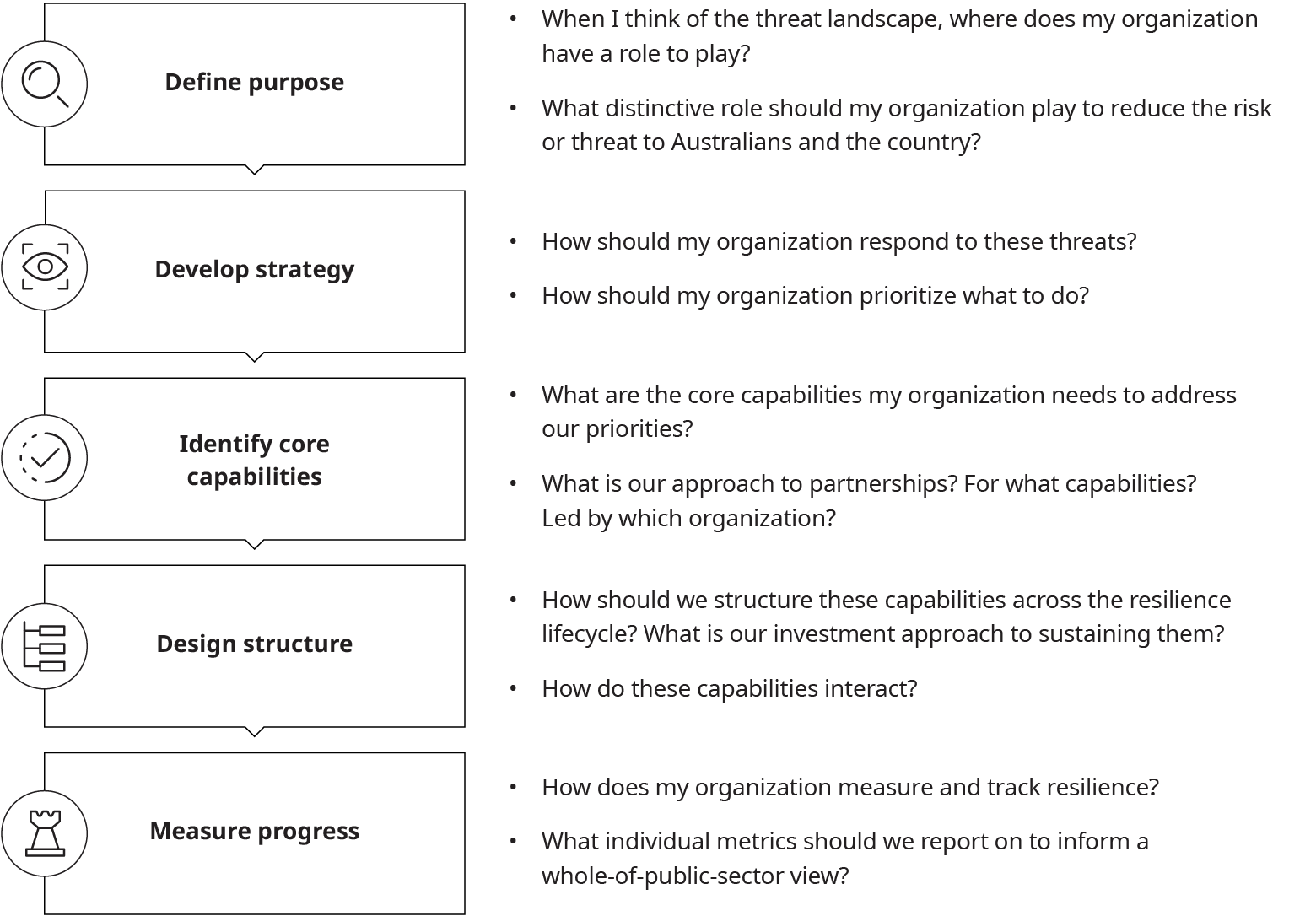If the last five years were any indication, the resilience of Australia and its public sector will continue to be tested. The COVID-19 pandemic, which began off the back of the Black Summer bushfire season, caused supply chain disruptions that are only now returning to pre-pandemic levels. Even as Australia has transitioned into a post-pandemic world, threats in the forms of disastrous weather events, shifting geopolitics in the Indo-Pacific region, cyberattacks such as the 2022 Optus data breach, and tough economic and financial conditions continue to test its government.
For the public sector to navigate these growing risks and continual shocks, there needs to be a concerted effort on building resilience, which is the ability to ‘bounce-back’ in the face of difficulties and move forward. It is fundamentally different from disaster recovery strategies which typically respond to only one shock; this capability allows the government to better predict, respond, recover, and adapt to multiple events and risks that may threaten national security. Doing so is paramount to maintaining public trust and achieving long-term sustainability in the Australian public sector.
The public sector has shown its ability to tackle major national challenges, as demonstrated by the government's response to COVID-19. The question now, however, is how to embed this behavior as an enduring resilience capability that lives beyond one shock or event.

Defining resilience in the context of the Australian government
There are two ways for the public sector to think about resilience. From a macro lens, the public sector should consider the role it plays in protecting Australia and its people, and what may hinder the sector from delivering on this purpose. Secondly, the public sector needs to think about how it operates to enhance its resilience, both internally within the myriad of state, territory and federal departments and agencies, and externally with industry and communities.
Each public sector organization plays — or should play — a distinctive role in reducing the risk and impact of current and emerging threats to Australia and its people. Public sector leaders should be up to date with the threat landscape and effectively communicate to stakeholders their role in responding to the threats.
We look into five capability-centric steps — defining the purpose, developing the strategy, identifying the core capabilities, designing the capability structure, and measuring the progress of the strategy — and their corresponding questions that provide a high-level approach for leaders to build resilience. These steps are inter-related and dependent on one another; missing any of them would undermine the others and fail to produce sustainable results.

The public sector employs more people than any other industry in Australia — approximately 2.4 million across the Commonwealth, state and territory, and local governments in June 2023 — and needs to understand the critical attributes required to build employee-level, sector-wide resilience and maintain the trust of the public on the effectiveness of the public sector.
Five critical attributes to build resilience and public trust
Diversity in the public sector composition
Improving the representation of diverse groups and skillsets at senior public sector levels is an important step to creating ongoing adaptability. A diverse workforce brings together wide-ranging perspectives, skills, and experiences to tackle challenges.
Strong leadership at the top of the sector
The government must identify strong leaders who will overcome department and agency siloes to champion resilience efforts for the national interest. Robust leadership is essential, especially in times of significant media coverage and major crisis events, such as the 2022 Eastern Australia floods.
Clear responsibilities across all levels of government
Building an ecosystem with clear roles and responsibilities to navigate across siloes and the various levels of government, industries, and communities will help in fostering resilience and achieve collective good.
Agile and flexible workforce with relevant skills
To capitalize on the desire to build individual resilience skills, public sector leaders should encourage workforce flexibility and seek people who can adapt and pivot to different shocks seamlessly. With a critical shortage in technology and digital-related skills among its employees, the public sector requires more concerted efforts to retrain, upskill, and retain existing staff to undertake these roles.
Rigorous feedback loops for continuous improvement
With the predict-respond-recover-adapt lifecycle for resilience, any feedback or lessons learned from throughout the cycle needs to be better communicated among the departments and agencies within the government, so that the progress on building resilience does not remain stagnant.
The last five years have shown us that the public sector is facing an environment of uncertainty with increasing risk, complexity, and interconnectedness. Equipping the sector with the required attributes to build and foster resilience is more critical than ever before. Above all, it is important to remember that achieving resilience is a continuous capability build and not a means to an end. The public sector needs to continue to assess and incorporate learnings to improve and evolve their resilience capabilities.


